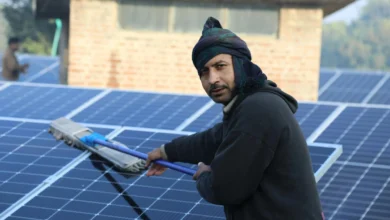
How is a Mens Leather Jacket Made?
How exciting it is to know the composition and manufacturing process of your favorite attire! Leather jackets are sold worldwide by many top brands as a fashion item. Different companies design them in different ways. However, we have found the general process that will help you recognize the whole process in detail.
So, let’s visit the manufacturing industry of leather jackets for men from beginning to end
Raw Material
Lambskin, sheepskin, buckskin, and cowhides are most commonly considered for leather jackets. When the skin is detached from the specific animal, it’s kept in the refrigerator and stored in barrels of brine. Then, the skin undergoes multiple processes designed to preserve & soften the hides in the tannery. This step is very important as it’ll decide the jacket’s quality.
The next step is to get sewing materials such as lining, buttons, snaps, seam tape, thread, and zippers. These things are generally bought from outside vendors and then stored in the leather jacket factory for later use.
The Preparation Process
After the collection of raw materials, experts proceed with the preparation process further considering three parts including trimming and cleaning, tanning, and washing & drying.
Let’s see each step in detail.
Trimming and Cleaning
Animal skin passed through trimming and sorting according to thickness, weight, and size. Workers remove any protein if found on the skin to avoid the growth of bacteria. Then, the skin is soaked in a revolving drum filled with detergents, bactericides, and water. Lime solution and chemical spray are used to remove hair. Any excess hair could be scraped off using a scudding machine fitted with dull blades.
Then, the skin is passed through a washing process to remove the chemicals before the hide is soaked in acid solution and passed through enzyme treatment to soften the hide while maintaining its flexibility. Finally, the hides are pickled with sulfuric acid and salt.
● Tanning
Then, the hide is passed through three types of tanning: vegetable tanning, material tanning, and oil tanning. Vegetable tanning required soaking of skin in progressively stronger tannic acid solutions for a long time. However, if there’s soft leather-like lambskin, 12 hours of soaking is enough. Mineral tanning is a fast process but can change the leather color. The skin is placed in alum salt-filled drums adjusted with paddles. It provides a constant agitating motion. Oil tanning closely resembles old methods. In this method, skin is sprayed with fish oil.
● Washing and Drying:
After the skin has been tanned, it’s washed again and wrung out thoroughly. Then, the skin is cut to a uniform thickness and then carried to drying tunnels. The skin is stretched on the frame and sprayed with water & soap. Then, it’s hung for a specific time.
After conditioning, the skin is placed in a machine to make skin flexible. Then, the hide is hung in vacuum-drying cabinets. It’s buffed with a revolving steel cylinder. Passing hides under rapidly-moving emery wheels produce a suede finish. At this point, dyes, glazes, and lacquers are applied. The skin becomes ready to be sent to the factory that offers manufacturing processes for stitching leather jackets for men.
Manufacturing Process
The manufacturing process mainly involves four steps including jacket designing, cutting, jacket assembly, and molding & pressing.
● Jacket’s Design
Before anything, of course, the basic pattern for the jacket is required. Designers work on computerized machines to grade the design according to government anthropometric tables. It assigns sizes based on body weight and height.
● Cutting
The leather is placed on spreaders (moving tables) and the pattern is placed on the leather top. The recent technology allows the fabric to vaporize rather than be cut.
● Jacket Assembly
This step decides the shape and appearance of the jacket. Here, sides, sleeves, collars, cuffs, buttons, buttonholes, zippers, and pockets are stitched. Patch pockets are stitched onto the side pieces before being stitched to the back portion. Side pockets are stitched at the same time that the sides are fixed to the back. The lining material is fastened to each piece before it’s stitched onto the jacket.
● Molding and Pressing
Then, further processing is done through molding and pressing. Multiple pressing processes considering heat application, blocking, and steaming are employed to convert animal skins into a jacket.
Final Inspection
Before leaving the factory floor, every jacket is inspected by hand. Then, the completely designed piece is packed in cartons and sent to the retailer.
So, that was the whole process of stitching men’s leather jackets. Hope so you have enjoyed the article!





